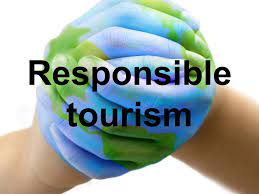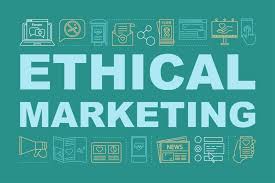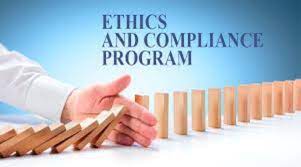Social Economic Benefits of Marketing
The article Marketing’s Contributions to Society by Willkie and Moore (1999) is a farfetched reflection of the numerous impacts of marketing to the society. I find the authors presentation of the benefits of the aggregate marketing system and how it continues to benefit the society argumentative and convincing. The article is largely a celebration of some of the aspects of marketing field to the society.
The authors, Willkie and Moore present the benefits of marketing by discussing its contribution to the larger economic issues .They further examine some of arguments raised by critics of an aggregate marketing system. Three of the major issues that have widely been covered in the article are marketing and economic development, effects on consumers and impacts of unethical marketing activities.
However, the article does not delve much into the benefits of engaging in ethical marketing, but rather focuses on the general economic and social benefits of aggregate marketing system. Perhaps the greatest benefit a firm can accrue from ethical marketing activity is not only propelling the
aspect forward, but that it may never be entangled in a legal lawsuit or ethical dilemma that can lead to losses and unnecessary cover up expenses.
Marketing and economic development
Aggregate marketing system has largely benefited the area of economic development. The articles argue that marketing is an entrepreneur and an organizer of resources. Areas with increased population in marketing tend to have a higher Gross Domestic product. In support of this argument, Patterson (2012) note that on an average of £1 spent on advertising- a form of marketing- the UK economy gains £6. This implies that for £16 billion of UK advertising in 2011, £100 was generated for the UK economy.
Advertising in UK helps export more than £2 billion in addition to presenting a strong international recognition where the UK can export a wide range of goods and services. This type of marketing has successfully supported advertising sectors of the economy such as photography, film production, music and entertainment. Patterson states that there are over 550 000 people employed by advertising, or involved in creation and production of advertising (2012).
Through marketing practices such as advertising, businesses are able to deliver a wide range of innovative and high quality products and service that can help match buyers and sellers more efficiently. This allows business with novel ideas to succeed faster and in a unique manner (Binsardi and Ekwulugo, 2003). The revue generated form advertising provides help provide valuable services to consumer’s such as news, entertainment and travel information.
These services are highly beneficial to the economy as they support online and high street sales. Nonetheless, it’s insufficient to define the role of marketing in terms of advertising alone. The role is broader with a critical role in the making of key economical functions. It’s at the core of diferent cycles of competition and innovation.
The treatment of aggregate marketing economy, according to Willkie and Moore (1999) is a complex political context. Government policies help determine opportunities for the contribution of marketing to the society (Theorell, 1996). Governments will usually pursue five possibly contradictory goals: income distribution, price control, payments balance and fuller employment. In social terms, marketing must be ethical and embedded in the society’s culture.
However this can be difficulty where diferent cultures fail to synchronize with prevailing marketing systems. Certain consumer characteristics like handling of finance, saving, ethical orientation and persuasion must be learned for the marketing system to function well.
Marketing has a critical effect on the aggregate demand although so many business persons have not realized the full contribution of marketing to the wellbeing of the economy (Min and Mentzer, 2000). Kinnear (1994) argues the reason is that benefits are not seen in the classic macroeconomic equation. They fail to look into efficiencies and skills form wholesaling, retailing and logistics.
The aggregate supply depends on capital stock, labor, raw materials and technology. Willkie and Moore (1999) argue that if economists’ equation were to identify the effects autonomous consumption and the value of marketing efforts in the economic system would be clear. This would in the end stimulate interest in calibrating that magnitude of these conditions.
Both regional and national marketing are a powerful tool for economic development. When done properly, regional marketing has the potential to attract foreign and domestic investment through effective policies (Bordaskaya, 2012; Thorne and Ferrell, 2002.). The marketing will further lead to preservation and development of intellectual capacity through the development of science and education.
Other benefits range from creation of favorable conditions for the development of small and medium sized firms, enlarging of existing institutions for economic and social expansion. Additionally, marketing encourages increased production by organizing and operating networks for communication and exchange (Weerawardena, 2003).
The equalization of demand and supply occurs through transport, storage and price where a special connectivity joins different locales in larger market. This ensures there is a place to provide efficiencies of scale and reduce the price of goods and services for the consumers. With time, these will serve as springboard for marketing and entrepreneurs.
Contributions to Buyers from Specific Marketing Activities
The article agrees that there are numerous competing firms in the aggregate system at time that presents uncountable benefits to the society in parallel. To understand the scope of these benefits, the article starts by examining the concept of utility. Distributing series add more value to the economy than production, and elementary utility which refers to extraction of crops and raw materials is arguably beyond market purview.
Other form of utility results from operations where marketing activities contribute by supplying essential inputs to the production process and the provision of insights from the marketplace. Place utility on the other hand represents the value added by offering goods needed by the buyers while marketing utility contributes to time utility by preplanning, and promotion activities. This ensures customers obtain goods when they need them. The final utility is possession utility which is offered through marketing transactions and allows customers use goods for the right purpose.
Marketers have paid significant attention to the purchase process given that they benefit from payments of purchases. Yet, the benefits received by customers result from consumption. Interestingly, each usage occasion creates an opportunity for another delivery from the system. The consumers will get multiple benefits from single purchase since one product can present more than one benefit. For example, a car can not only provide transportation service, but also music entertainment or shelter when it’s raining.
Also, facilitation of transaction process is one of the most powerful aspects of the marketing system in any given society. This saves consumers time and effort while maximizing purchase opportunities. Some of these benefits include extended store hours, free parking, stocked shelves, displays ad smooth checkout. Process for buyers credit enables some of the expensive purchases to be realized which would have otherwise been delayed. The channels of distributions at entry point for new products and services.
Ethical aspects of marketing
It’s not easy to understand the numerous benefits and implications of marketing without looking at the interplay between the ethical and legal aspects of the sector. Although the article fails to sufficiently diagnose ethical marketing and its role in the society, there is a clear argument by the critics of an aggregate marketing system. Some of these practices noted by the Willkie and Moore (1999) include stress conformity and promotion of materialism.
Furthermore, marketing discourages participation in non-economic activities like arts while undermining family ties, altering socialization and the enabling the practice of manipulative persuasion. Additionally, aggregate marketing leads to creation of artificial needs and wants, causes depletion of resources through continued exploitation of resources (Caudill and Murphy, 2000).
To maintain their competitive advantage and maximize market presence, firms might be entangled in illegal and unethical practices. Harris (2001) notes that marketing is either part of the law, or subject to the law. Consumers should be concerned about marketing of products and how companies present information (Carrigan and, 2001; Shaw, and Shiu, 2003.).
How do oil producing firm’s influence environmental research that goes against increased carbon dioxide emission? What is the role of big pharmaceuticals in health related researches? Do alcohol manufactures have a hand in research that supports moderate alcohol consumption? Even if the article seemed to avoid this aspect of marketing, there is a need for consumers to question the morality of marketing practices noting that many firms are primarily driven by desire make more profit.
According to Friedman (2000), firms are plunged in a universe of relationships where there are many stakeholders. The emergence of global groups of stakeholders has further complicated the globalization scenario. The competition has seen companies rush to identify creative and workable solutions to create a competitive edge. Marketing ethics therefore becomes a prerequisite for running any type of activity in the market place.
Verhezen (2005) adds that the role of ethics in marketing has been understood using two approaches. The first states that business executives have a sole responsibility to increase the shareholders’ value. The article contends that ethical business activities are rewarding, suggesting that choosing to engage in ethical marketing can enhance shareholder wealth. Due to the sensitivity of ethics and its implications, governments have lately established strict regulation measures to protect consumers from unethical marketing behavior (Azmi, 2006; Eon and Van Vuuren, 2010).
However these regulations are not sufficient enough. According to Geoghegan & Azmi (2005), a company that boasts of having a good regulation must have found ways to fit the ethical values of an individual agent and when it’s appropriate. One of the major functions of marketing is to create a positive corporate reputation.
Companies will spend a lot of money to improve their public image but all the effort is meaningless if it’s unethical. Fan (2005) defines s corporate reputation in terms of various attributes that form in the consumer’s perception about a products reliability, goodness, trustworthiness and reputation. Corporate reputation has also been referred to by (Fombrun, 2000) as being concerned with how people feel about a company based on the information they have the firms activities and past performance.
Conclusion
As seen in the article, Marketing’s Contributions to Society, marketing plays a key role in the development of social economic activity of any given society. There are several benefits ranging from advertisers, transporters, distributers manufacturers and wholesalers who get employed in marketing activities. This in turn leads to creation employment in news, entertainment, fashion, design and transport sectors.
Willkie and Moore have consistently held that marketing is the key driver of the economy that leads to economic development. If well played out well, marketing has the potential to attract foreign and domestic investment for the upward mobility of the society. Furthermore, marketing is a leading promoter of competition and product differentiation.
Coupled with innovation, marketing helps new entrants penetrate the market and remain competitive. Not only do consumers demand the products at a higher rate thorough marketing, but also become price sensitive. This benefit can be seen clearly in every market type ranging from transportation, flight, entertainment, tourism and manufacturing. At the core of marketing are the legal ad ethical aspects that have the capacity to ruin or polish any firm’s corporate reputation. Global competition and increased awareness of product features by the consumer’s has resulted to unhealthy competition for market dominance. However, only firms that understand proper marketing strategies while engaging in ethical and legal activities can sustain their customer base for a long time.
Reference
Azmi, R.A., 2006. Business ethics as competitive advantage for companies in the globalization era.
Binsardi, A. and Ekwulugo, F., 2003. International marketing of British education: research on the students’ perception and the UK market penetration. Marketing Intelligence & Planning, 21(5), pp.318-327.
Bondarskaya, T.А., The Role Of Marketing In Socio-Economic Development Of The Territory. Tambov State Technical University, Tambov
Carrigan, M. and Attalla, A., 2001. The myth of the ethical consumer–do ethics matter in purchase behaviour?. Journal of consumer marketing, 18(7), pp.560-578.
Caudill, E.M. and Murphy, P.E., 2000. Consumer online privacy: Legal and ethical issues. Journal of Public Policy & Marketing, 19(1), pp.7-19.
Eon Rossouw, D. and Van Vuuren, L., 2010. Business ethics. Oxford University Press, 2010.pp 341. Available at: https://books.google.co.za/books/about/Business_Ethics.html?id=cXn2RAAACAAJ
Fan, Y., 2005. Ethical branding and corporate reputation. Corporate communications: An international journal, 10(4), pp.341-350.
Fombrun, C. (2000) “The value to be found in corporate reputation”, Financial Times, 4 December
Friedman, Douglas (2000). “Ethics needed to be Part of the Cutting Edge”, Erlanger, Vol. 104, pp. 2-14.
Geoghegan, J. and Azmi, R. (2005). “Corporate Governance Enforcement: Between Institutional Investors and Social Pressure”, the Fifth Annual Conference of the Faculty of Commerce – Alexandria University on Corporate Governance, Alexandria, pp. 545-560.
Harris, H., 2001. Making business ethics a competitive advantage. Hawke Institute, University of South Australia.
Min, S. and Mentzer, J.T., 2000. The role of marketing in supply chain management. International Journal of Physical Distribution & Logistics Management, 30(9), pp.765-787.
Moore, Elizabeth S. and William L. Wilkie (2000), “Criticisms, Con- troversies and Problems in the Aggregate Marketing System,” working paper, Graduate School of Business, University of Notredame
Patterson, Gavin . 2012. Advertising Pays: How advertising fuels the UK economy, Deloitte LLP, Advertising Association, London
Shaw, D. and Shiu, E., 2003. Ethics in consumer choice: a multivariate modelling approach. European journal of marketing, 37(10), pp.1485-1498.
Thorelli, Hans B. (1996), “Marketing, Open Markets and Political Democracy: The Experience of the PACRIM Countries,” Ad- vances in International Marketing, 7, 33
Thorne McAlister, D. and Ferrell, L., 2002. The role of strategic philanthropy in marketing strategy. European Journal of Marketing, 36(5/6), pp.689-705.
Verhezen, Peter (2005). “Integrity as Good Reputation”, International Conference on Ethics and Integrity of Governance: A Transatlantic Dialogue, Belgium
Weerawardena, J., 2003. The role of marketing capability in innovation-based competitive strategy. Journal of strategic marketing, 11(1), pp.15-35.
Wilkie, W.L. and Moore, E.S., 1999. Marketing’s contributions to society. The Journal of Marketing, pp.198-218.
Want help to write your Essay or Assignments? Click here









